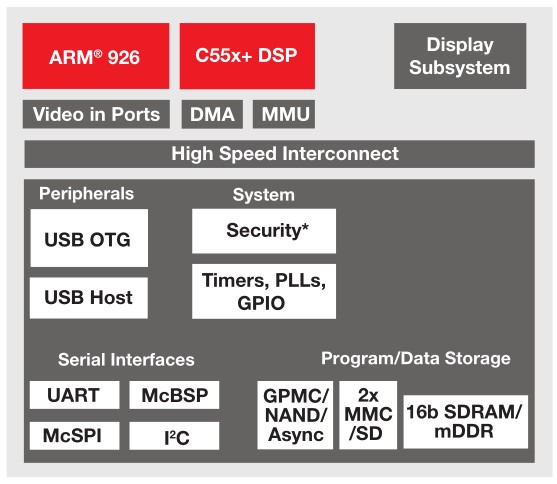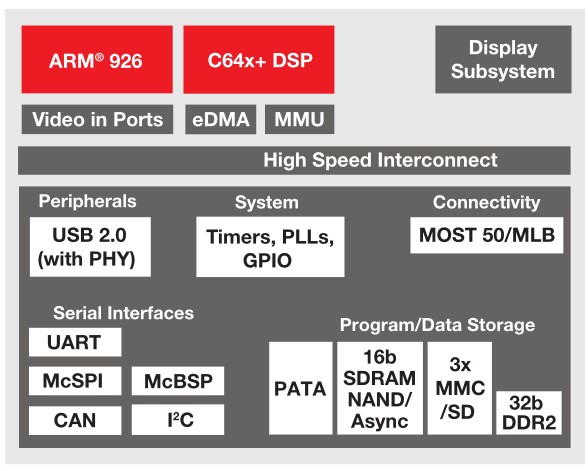introduction
In-vehicle infotainment consumers may consider in-vehicle network access to be an emerging feature, which simply means Internet access. Our concepts are also rapidly updated. Few people think that CAN communication is a high-tech term, but in the infotainment system, CAN and other internal connection protocols (such as MOST, Ethernet, USB, etc.) constitute an important backbone network, making today's many key vehicle The function is realized. Bluetooth technology was once defined as a "wireless" connection technology for vehicles. Now, people have expanded its definition to integrate it into smart phone network sharing, in-vehicle Wi-Fi® access points, workshop communication, near field communication (NFC), and so on.
Over the past 10 years, TI and QNX Software System Co., Ltd. have worked closely together to bring us many innovative in-vehicle infotainment connectivity solutions. Even if it was replaced by some systems used in today's vehicles, many of these systems were groundbreaking at the time. This article will discuss in depth the improvement and innovation factors that drive the development of these systems and look forward to their future development. Not only can innovation be achieved through the use of new in-vehicle systems and in-vehicle electronic components to achieve interaction, but through some “less eye-catching†but crucial methods (for example: reducing system cost, size and power consumption, etc.) Achieve innovation. In addition, we will also discuss the access technology from two aspects of vehicle-mounted system and external equipment.

The picture shows the console of the QNX benchmark vehicle in the specially modified Jeep Wrangler
OMAP1 processor Bluetooth technology and compressed audio
After the introduction of the OMAP1 processor in 2002, TI released a series of monolithic automotive devices that can achieve a rich multimedia experience (CD-DA and CD-ROM / DVD-ROM / USB / SD, support MP3, WMA and AAC audio decoding Device). These devices also provide connectivity for phones using early Bluetooth technology, enabling hands-free calling in the car. These solutions are still in volume shipments, and until 2012 they were providing consumers with a feature-rich entry-level infotainment experience. Together with QNX Software Systems, Texas Instruments has brought many important innovations to the OMAP1 processor, including the integration of multimedia functions and an application-based processor into a system on a chip (SOC). This solution uses TI's C55x digital signal processor (DSP) to increase the speed of the audio codec and processing, while using the ARM926 general-purpose processor of ARM Holdings and the simple API of the DSP to coordinate communication.

Figure 1: Simplified OMAP1 processor structure diagram
Jacinto 1-DDR Enhanced Multimedia and Software Defined Radio
After launching five OMAP1 processor versions, TI released Jacinto 1 series devices in 2006. This new device family has brought a major leap in infotainment integration. Compared with the OMAP1 series, the Jacinto 1 series has a lower cost point and can realize more functions, such as: playing compressed video from DVD or local USB / SD storage, providing Bluetooth A2DP audio streaming support for Apple iPod®, and digital radio baseband Demodulation (DAB in Europe, HD Radio ™ in the US). In addition, Jacinto 1-DDR devices can also drive two high-definition color displays for user interface or video playback, allowing OEMs greater flexibility in the display of screen information. The Jacinto 1 device also replaced the C55x DSP with a powerful TI C64x + fixed-point DSP. The high performance of C64x + DSP supports simultaneous graphics acceleration, compressed audio decoding, speech recognition and radio demodulation. This parallel running feature greatly expands the functionality of a single isolated ARM CPU.
Another important innovation implemented by TI and QNX Software Systems in Jacinto 1 devices is the DSP Link Interprocessor Communication (IPC) component. This link connects the ARM CPU and DSP together, and uses DSP to accelerate the implementation of zero-overhead control of applications and peripheral devices. The DSP link IPC software is a major development of the OMAP 1 processor, the brother product of the Jacinto 1 processor. The range of DSP link software mechanisms has been expanded to support several completely different information transmission technologies. In addition, it also allows some very different functions to be executed simultaneously on the DSP, such as: audio codec, graphics acceleration and radio demodulation, etc., while allowing ARM software to perform these functions seamlessly and with low latency through user applications control.
The Jacinto 1 processor also allows the hardware to arrange and process video from external sources, such as cameras and DVDs, directly output to the display. Some previous architectures can only complete video resource arrangement or multiplexing through software algorithms or using separate hardware devices through the user interface. Using software to mix and display the user interface with the camera or video overlay, set transparency, or perform color space operations will greatly increase the software processing overhead, while also increasing the bill of materials (BOM) cost of individual hardware devices. Jacinto 1 devices implement graphics processing through hardware functions (for example: color space conversion or transparent mixing processing), thereby eliminating the need for the above two solutions. This advantage liberates the ARM CPU from the heavy graphics processing work, allowing it to be used to implement more software functions, thereby achieving OEM differentiation.
QNX Software Systems has contributed basic software components to the Jacinto 1 system to support the many functions of the device. For example, use the multimedia framework of DSP codec that can be linked by DSP, and integrate the DSP accelerated graphics functions provided by third-party companies into the QNX software system OpenGL® ES driver.

Figure 2: TI Jacinto 1-DDR processor diagram
PufangTech`s VHF radio modems operate in 136~174MHz and 220~240MHz frequency band. The VHF Radio Modem has an air data rates of 19200bps in 25kHz channel spacing and 9600bps in 12.5kHz.
Suitable to apply in data collecting, and VHF radio modems have been used to transmit voice and radio data since the middle of last century. This is one of the most efficient ways to communicate over miles away. A wider coverage is a different advantage belongs to VHF frequency from the others. VHF has 30 to 50 per cent larger range than UHF Radio Modem with the same carrier power.
VHF Radio Modem,VHF Modem,VHF Data Radio Modem,VHF Data Radio
Shenzhen PuFang Technology Co., Ltd. , https://www.hytelus.com
